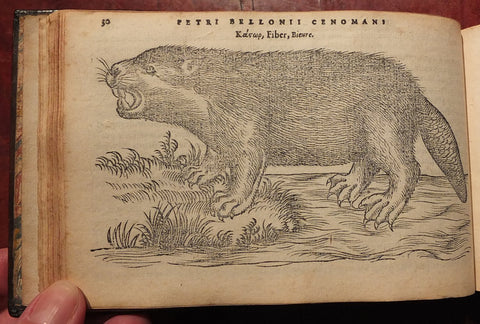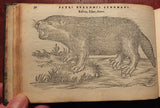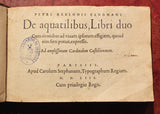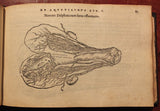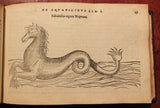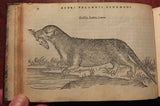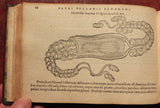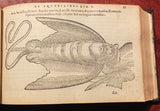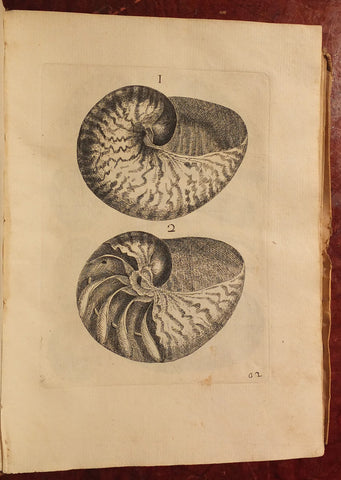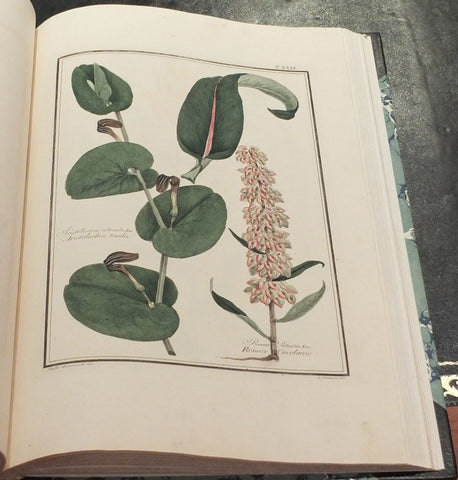Pierre Belon (1517-1564), De aquatilibus, libri duo Cum eiconibus eiconibus ad vivam ipsorum effigiem, quoad eius fieri potuit, expressis.
Pierre Belon (1517-1564)
De aquatilibus, libri duo Cum eiconibus eiconibus ad vivam ipsorum effigiem, quoad eius fieri potuit, expressis.
Paris: Apud Carolum Stephanum, Typographuum Regium, 1553. Paris: Charles Estienne, 1553.
Oblong 8vo., (4 x 6 inches). 187 fine woodcuts of all manner of sea creatures: mammals, including porpoises, dolphins, seals, hippos, beavers, otters, water rats, a sea wolf, a horse with a fishy tail and a merman; reptiles including crocodiles, iguanas, a chameleon, and turtles; sharks, a catfish, rays, eels, an octopus squid and cuttlefish; a sea-horse, a nautilus, shells, shellfish, crabs and lobsters and an anemone. Fine contemporary mottled calf, the spine in five compartments with four raised bands, a red morocco lettering-piece in one, the others decorated with fine gilt tools (some discreet and expert restoration to the joints).
Provenance: with near contemporary ownership inscription of "Martiau" and "Mauricius de Raincourt" on the title-page; and with the blue ink library stamp of Seminaire de Précigny also on the title-page
First edition in Latin, first published in French in 1551 as "L'Histoire Naturelle des Estranges Poissons Marins".
"The revival of research into animal structure dates from the publication of Belon's work on the anatomy and classification of selected marine 'fishes,' a term under which Belon included the dolphin, the porpoise, and even the hippopotamus" (Norman).
Belon was among the most eminent scientists of the Renaissance. Though from humble origins, he was nevertheless the apothecary to the archbishop of Le Mans, Rene du Bellay and Francois II of Turnon, archbishop of Lyon. His illustrations and account are very detailed and include the first observations of the embryos for porpoises, dolphins and sharks, and some of the earliest representations of molluscs, and as such Belon's work constitutes the greatest single advance in the scientific study and classification of fish since Aristotle, and remained a standard text on marine life until well into the 17th-century. Norman 179 (original edition). DSB I, 595-96; Garrison-Morton 279; Nissen ZBI 302 (this edition).
We Also Recommend

